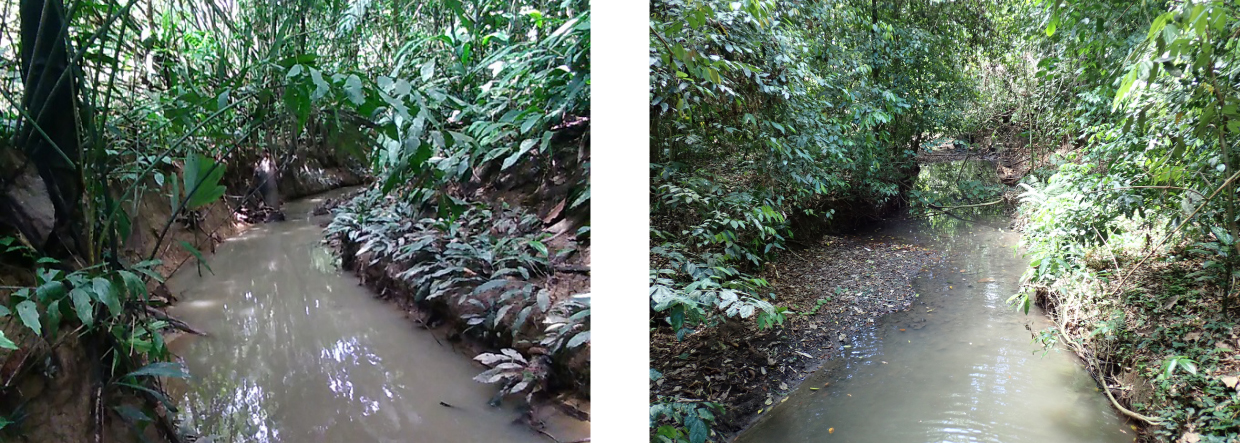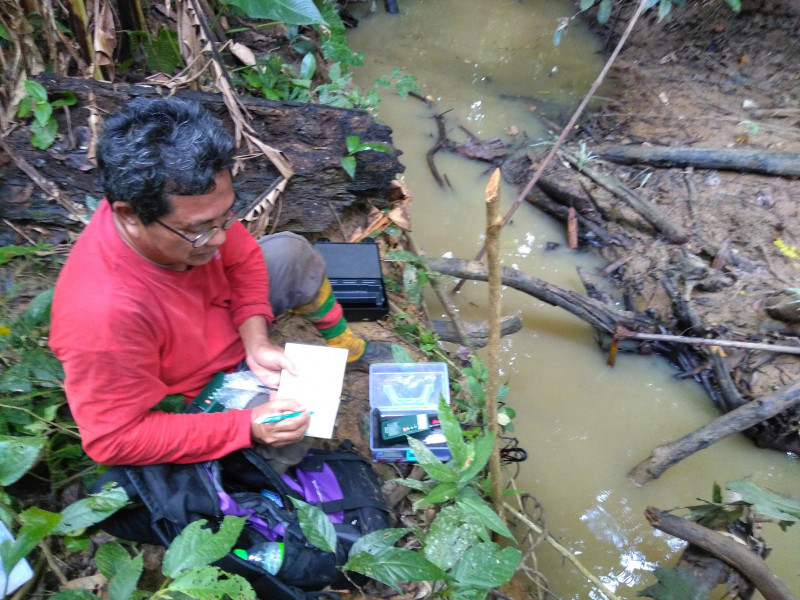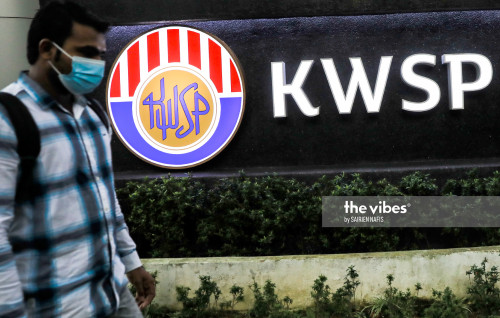RESEARCH led by the University of Nottingham has uncovered two new species and a new genus of freshwater mussels in Borneo. It was the first such find in almost 100 years.
Dr Alexandra Zieritz, in the university’s School of Geography, with collaborators from Malaysia, Indonesia, Brunei, USA and Portugal, made the discoveries in small streams in the Gomantong Forest Reserve, Sabah, and near the village of Kuala Mendalam, Sarawak, respectively.
The scientists found that both species are unique to Borneo.
They are described by the researchers as “quite different from anything we have known to date”, thus representing a new freshwater mussel group, or genus.
The team named the species Khairuloconcha sahanae, in honour of the late Dr Sahana Harun, and Khairuloconcha lunbawangorum, after the indigenous Lun Bawang tribe of Borneo.
Their discovery comes 94 years after the last freshwater mussel from Borneo was described (Ctenodesma scheibeneri in 1927).
The other 17 species known from the island were described much earlier – between 1840 and 1903. Borneo has an exceptionally high number of endemic freshwater mussels. Fifteen of the 20 recognised native species are found on the island.
The findings of the team’s four-year study are published in the journal Aquatic Conservation. The team are also responsible for the first-ever DNA sequence data of Bornean freshwater mussels, generated in 2016.

Dr Alexandra Zieritz, Anne McLaren Fellow at the University of Nottingham and lead author of the study, said: “The new species of freshwater mussels we have discovered are very rare, known only from a single site each (one in Sarawak, one in Sabah), and highly threatened by ongoing habitat destruction.
“One of these species is at especially high risk of extinction, as the only site it's known from has already been dedicated for an industrial oil palm plantation. We are preparing the paperwork with the Universiti of Malaysia Sarawak to get this area protected.
"This would not only help the unique biodiversity in this area but also the indigenous Lun Bawang tribe,” she added.
The authors note that the declines of existing populations of freshwater mussels on Borneo have likely been caused by industrial-scale deforestation and land-use change from primary rainforest to agricultural monocultures (predominantly oil palm plantations).
The experts say these practises result in high levels of soil erosion, strongly increasing sediment yield (amount of sediment run-off), and organic and inorganic pollution (via agricultural run-off) of rivers.
These negatively affect freshwater mussels directly, by degrading habitat quality, or indirectly by reducing host fish populations that they need to complete their life cycles.
Other potential drivers of declines in Borneo’s freshwater mussel populations include pollution from domestic and industrial sewage, hydrological alterations, mining, climate change and invasive species.
Why are freshwater mussels important?
Freshwater mussels are a crucial part of many freshwater habitats globally. They live on the bottom of all kinds of freshwater habitats, including rivers, streams, lakes and ponds.

They filter algae, bacteria and other organisms from the water, thereby acting as biological filters and playing a major role in nutrient cycling. They can remove algae, bacteria and other material at a rate of about 1 litre of water per hour per mussel.
Much of this material is subsequently transported to the benthos (organisms living on the bottom of the habitat). They provide food for insects and other invertebrates, which thrive in mussel beds in both abundance and diversity.
They have also been shown to enhance the biodiversity of insect larvae and other small organisms by providing a three-dimensional habitat. Especially in Asia, people use them directly as a food source and their pearls and shells for ornamental purposes.
Other ecosystem services that they provide worldwide include their use in biomonitoring (ie, monitoring of water quality) and bioremediation (eg, wastewater treatment).
Dr Zieritz said: “The discovery means that there is a lot that we do not yet know about Borneo’s freshwater mussel diversity. Despite our efforts over these past few years, we have so far only surveyed a small proportion of the island, restricted to Malaysian Borneo and Brunei.
"Hardly any recent data on freshwater mussels are available for Kalimantan, the Indonesian part of Borneo, which makes up 73% of the island.
“Despite these constraints, we have found two new species. There may be more species waiting to be discovered and which likely require protection. However, considering the rapid rate of habitat destruction, we need to act fast in locating the remaining populations of native and endemic Bornean mussels.
"This is so that they can receive the necessary protection. The situation is most likely similar for other obscure freshwater organisms, such as beetles, snails or mayflies, for which we have even less data at the moment.”
The collaborators on the study were Leonardo Jainih of Universiti Malaysia Sabah; John Pfeiffer of National Museum of Natural History; Khairul Adha A. Rahim of Universiti Malaysia Sarawak; Hari Prayogo of Tanjungpura University; Muhammad Sofwan Anwari of Tanjungpura University; Arman Hadi Fikri of Universiti Malaysia Sabah; Farah Diba of Tanjungpura University; Hussein Taha of Universiti Brunei Darussalam; Zohrah Sulaiman of Universiti Teknologi Brunei; Elsa Froufe of Cimar/Ciimar-Up Centre of Marine and Environmental Research, AEE; Manuel Lopes-Lima of CIBIO/InBIO – Research Centre in Biodiversity and Genetic Resources, University of Porto. – The Vibes, September 11, 2021



















